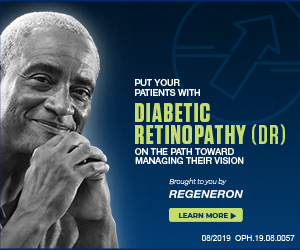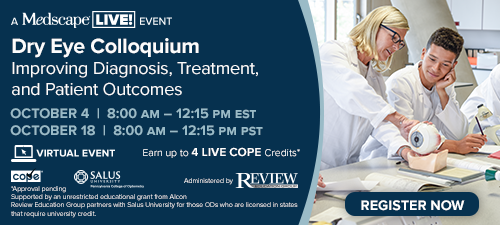
A
weekly e-journal by Art Epstein, OD, FAAO
Off the Cuff: Optometric Practice Scope Threatened Throughout the US - Immediate Action Needed
For those of you too young to remember, a group of visionary optometrists led by Dr. Norman Haffner met at LaGuardia Airport on Jan. 16, 1968, and charted the future of our profession. That meeting marked the beginning of a shift from the refractive and vision care focus of optometry to what we are today: the primary provider of comprehensive and medical eye care throughout the United States. From the very beginning of this transformation, optometry was subject to vicious, outrageous and patently false attacks by organized ophthalmology. Predictions of people dying in the streets from mydriatic drops to hundreds being blinded by incompetent uneducable ODs proved baseless. Even in the face of these still-ongoing attacks, our profession increased the depth and breadth of its training, and expanded its scope of practice. Despite the bitter battles that often raged between the two professions, in truth, ophthalmology has actually benefitted greatly from optometry’s increased scope and capability. Better trained and more capable ODs have allowed ophthalmologists to focus on the more complex surgical cases they trained for. In group practices, ODs and MDs working closely together improve efficiency and practice economics. In general, greater access to eye care has also broadly benefited the public, especially in rural areas where optometrists provide virtually all of the eye care. The system clearly works best when optometrists practice to the full extent of their training and work collaboratively with ophthalmologists. Reflecting this, the majority of thought leaders in both professions recognize the value of professional cooperation and mutual respect, and are committed to this. Unfortunately, this hasn’t stopped a small but active group of narrow-minded ophthalmologists from attacking optometry with despicable bigotry more often associated with racial and religious intolerance than behavior expected from a professional group of doctors. That optometry is an independent profession that doesn’t answer to ophthalmology seems beyond their grasp. Today, in what is likely the most mean-spirited abuse of a state referendum initiative, a process designed to give Americans a greater voice in their government, Safe Surgery Arkansas, supported by the American Academy of Ophthalmology, have mobilized to overturn the recent broadly bipartisan-supported scope expansion in Arkansas. Passed in 2019, this scope expansion included only minor safely-performed laser surgical procedures currently taught in every optometry program and is a focus that represents the future direction of our profession. So how does something in Arkansas effect you? More than half of the states allow for some form of ballot initiative on issues like this, and a well-financed win in Arkansas crafted to scare the public to their detriment will have repercussions that can roll back years of hard-won scope expansion throughout the US, including in your state. In simple terms, if this wins, you could lose privileges you currently have.
|
|||||
 |
||
| The Effect of a Photochromic Contact Lens on Visual Function Indoors: A Randomized, Controlled Trial | ||||
Photochromic soft contact lenses contain light-sensitive additives that allow them to darken when exposed to ultraviolet or violet light. One question, however, is whether the lenses influence vision indoors (minimally activated). In this study, we found that the minimally activated lenses improved many aspects of visual function under bright light. Photochromic contact lenses were designed to darken when exposed to outdoor sunlight. The filtering that resulted improved visual function under bright light conditions. Not all bright light exposures occur outdoors. In this study, researchers tested whether a photochromic contact lens improved visual function under conditions where the lens was minimally activated (i.e., no more than it normally would be in an indoor environment). A subject-masked contralateral design was used comparing a photochromic contact lens randomized to one eye against a non-photochromic contact in the other eye of the same subject. Sixty subjects (mean=34.90 ± 11.24 years) were tested. The primary endpoints consisted of four visual function outcomes: photostress recovery, glare disability, glare discomfort and chromatic contrast. Photostress recovery was quantified by measuring the time needed to recover visual acquisition of a grating target after five seconds of an intense xenon white flash exposure; glare disability was evaluated as the energy in a surrounding xenon white annulus necessary to veil a central grating target; and glare discomfort was assessed using bioimaging of the squint response. Chromatic contrast was measured as threshold for a green-yellow (580 nm) grating target superposed on a blue (460 nm) background. The minimally activated photochromic contact demonstrated improved visual performance compared with the non-photochromic control across all visual functions tested. |
||||
SOURCE: Renzi-Hammond LM, Buch JR, Hacker L, et al. The effect of a photochromic contact lens on visual function indoors: a randomized, controlled trial. Optom Vis Sci. 2020;97(7):526-30. |
||||
 |
||
| Contact Lens Wear, Corneal Complications and US Service Member Readiness | ||||
Ulcerative keratitis (UK), or corneal ulcer, is a sight-threatening and US service member readiness-lowering medical condition that begins with a corneal infiltrative event (CIE). Contact lens (CL) wear poses a particular risk for a CIE and, therefore, is restricted for most active duty service members (SMs). In this study, investigators explored a large Department of Defense/Veterans Affairs (DoD/VA) database to estimate the prevalence of UK and CIE, and their association with CL wear. The DoD/VA Defense and Veterans Eye Injury Vision Registry, an initiative of the DoD/VA Vision Center of Excellence, was explored using natural language processing software to search for words and diagnostic codes that might identify cornea injuries and CL wear. The effect of UK and CIE on readiness was explored by evaluating the duration between the first and final visits noted in the database. A total of 213 UK cases were identified among the 27,402 SMs for whom data were recorded in Defense and Veterans Eye Injury Vision Registry. The odds ratios of UK and CIE being associated with CL wear were 13.34 and 2.20, respectively. A less specific code (superficial corneal injury) was found to be the most commonly used diagnosis in the database, and the odds ratio of CL wearers having that diagnosis was 2.25. CL-wearing patients with corneal disease also required more clinic encounters than those who did not wear CLs. These findings supported the current restriction on CL wear among non-pilot active duty SMs and quantified the significantly enhanced risk of developing corneal ulcers posed by that habit.
|
||||
SOURCE: Flanagan G, Velez T, Gu W, Singman E, et al. Contact lens wear, corneal complications, and U.S. service member readiness. Mil Med. 2020; Jul 17. [Epub ahead of print]. |
||||
 |
||
| Use of Contact Lenses to Optimize OCT Scans of the Optic Nerve in Glaucoma Suspects or Patients with Glaucoma with High Myopia | ||||
Patients with myopia are at increased risk for the development of glaucoma. The inability to correct for axial length on spectral-domain (SD) OCT translates into lower signal strength and scan reliability in patients with high axial myopia. Researchers evaluated the effectiveness of a contact lens to increase the signal strength and to assess optic nerve dimensions and nerve fiber layer (NFL) thickness using SD-OCT in patients with glaucoma or who are glaucoma suspects with high axial myopia. Patients with axial lengths of more than 25.5mm with a diagnosis of glaucoma or glaucoma suspects were included. The optic nerve cube 200×200 scan using the Cirrus SD-OCT 400 (Carl Zeiss Meditec) was carried out first without the use of a contact lens and then repeated with placement of the contact lens to correct for the spherical equivalent of the refractive error. The primary outcome measure was the change in the average NFL thickness before and after use of the contact lens. Secondary outcome measures included the changes in cup volume, disc area and rim area on OCT. Twelve patients were recruited (20 eyes); the average axial length was 27.06mm, and the average signal strength interval increased by 1.73. With the use of a contact lens, the average NFL thickness was significantly thicker. None of the changes in the secondary outcome measures were significant: rim area, cup volume or disc area. Based on the data, researchers reported that the use of a contact lens statistically improved the signal strength and average NFL thickness of the SD-OCT scan. They added that the ability to capture the perimeter of the optic disc accurately could be limited in the setting of peripapillary atrophy, which was present in all but two participants. Researchers suggested that future studies with a larger number of participants and a wider range of axial myopia would be needed to discern if contact lens correction has a greater effect on the highest axial lengths. |
||||
SOURCE: Berkenstock MK, Parikh RA, Collins MD, et al. Use of contact lenses to optimize OCT scans of the optic nerve in glaucoma suspects or patients with glaucoma with high myopia. Ophthalmol Glaucoma. 2020;3(3):196-201. |
||||
| News & Notes | ||||||||
| The National Center for Children’s Vision and Eye Health at Prevent Blindness Issues Updates National Report As part of August’s Children’s Eye Health and Safety Month, and as a follow-up to its 2016 publication, The National Center for Children’s Vision and Eye Health at Prevent Blindness released an updated report on the national prevalence rates for vision conditions (amblyopia, strabismus, astigmatism, myopia, hyperopia, etc.), including breakdowns by age and ethnic groups. More detail is provided on early detection of vision disorders, vision screening, special considerations for children with special health care needs, national and federal guidance around children’s vision and eye health, building a comprehensive state vision health program and other areas. Some key findings included: • The annual US economic costs of children’s vision disorders total $10 billion. • Uncorrected refractive errors in infants and preschool-age children are associated with clinically identified deficits in cognitive and visual-motor functions that may have a negative impact on school readiness. Refractive errors make up 70% of decreased visual acuity in Asian and non-Hispanic White children. • In 2020, 40 states mandate some type of vision screening for school-age children, and 26 states require vision screening for preschool-age children. Read more. |
||||||||
| Lacrivera Obtains CE Mark & European Launch for Vera180 Lacrivera, a division of Stephens Instruments, announced CE approval for the Vera180 Synthetic Absorbable Lacrimal Plug. The plugs provide extended temporary occlusion lasting approximately 180 days and are ideal for treatment of post-surgical dry eye and for treating the dry eye components of various ocular surface diseases, including contact lens intolerance, the company says. The plugs—made of poly-p-dioxanone and available in sizes of 0.2 mm, 0.3 mm, 0.4 mm and 0.5 mm—are packaged in single pair and 10 pair boxes (20 plugs). Learn more. |
||||||||
|
||||||||
|
Optometric Physician™ (OP) newsletter is owned and published by Dr. Arthur Epstein. It is distributed by the Review Group, a Division of Jobson Medical Information LLC (JMI), 19 Campus Boulevard, Newtown Square, PA 19073. HOW TO ADVERTISE |


